In today’s world, gaming laptops reign supreme. They promise portability and power. The allure? Unbeatable. The sleek design, the roar of the CPU, the allure of high-res gameplay on the go. But there’s a catch. You’ve felt it. The warm lap. The dwindling battery icon. The sudden need for a power outlet in the middle of an epic showdown.
Statistics say it all. In 2020, gaming laptop sales spiked and 65% of the demand was for gaming laptop. Everyone wants one. Yet, 60% of users report dissatisfaction with battery life. Expectations are high. Reality? Often a letdown. You expect hours of gameplay. Your battery taps out far sooner.
Why this stark contrast? Let’s dive in.
1. High-performance Components
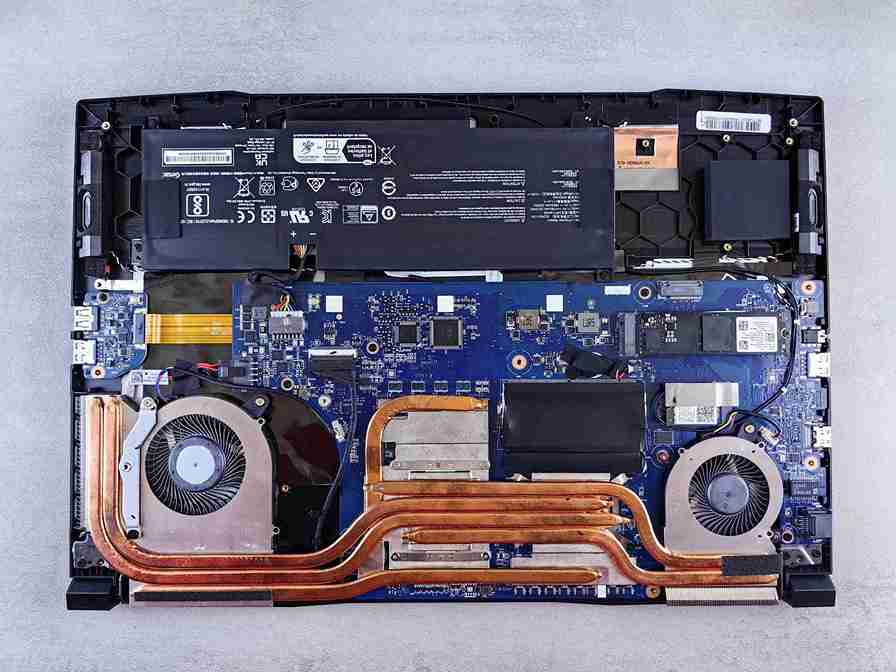
Gaming isn’t for the faint of heart. Nor for weak machines.
1.1. Powerful Processors
Speed is a gamer’s ally. Today’s games demand it. They’re not playing Pac-Man anymore. So, gaming laptops adapt. They pack the most robust processors in the market. Intel’s i9, AMD’s Ryzen 9 – these aren’t mere names. They’re powerhouses. But here’s the trade-off. The faster the processor, the quicker the energy drain. For instance, a laptop running an i9 can devour up to 45 watts per hour. That’s thrice as much as a standard laptop. Performance up, battery down. A seesaw not many anticipate.
1.2. Dedicated Graphics Cards
Visuals matter. No gamer wants pixelated dragons. Enter GPUs. NVIDIA, Radeon – these big guns ensure you see every scale, every droplet. But beauty demands power. A high-end GPU can easily chew through 200 watts. Remember the time when that boss battle caused your laptop to heat up? Real-time rendering. It’s a feast for the eyes but a famine for the battery.
1.3. RAM and Storage Drives
Smooth gameplay isn’t just about speed or visuals. It’s about memory too. More RAM? Fewer lags. Modern games suggest 16GB, some even 32GB. But RAM chips, while juggling data, sip power. And then, there’s storage. HDDs, the old guards – they spin, they consume. Up to 6 watts. SSDs, the new blood – faster, quieter, but still power-thirsty. A typical SSD can use up to 3 watts, even in idle.
High performance is a double-edged sword. It cuts through challenges. It also cuts through battery life.
2. Display Factors

The screen is a window to the gaming world. But it has its price.
2.1. High Refresh Rates
Smoothness is addictive. Once you’ve tasted 120Hz or 144Hz, going back feels like a curse. Each frame, each movement, silky smooth. But the GPU knows the strain. With every hike in refresh rate, the power draw climbs. Consider this: a 60Hz display might use about 10 watts. Bump that up to 144Hz? You’re nearing 20 watts. Silky visuals? Yes. But at what cost?
2.2. Brightness and Resolution
Ever seen a dragon in 4K? The detail, the clarity—it’s a sight to behold. But every pixel demands its due. The math is simple: more pixels, more power. A standard Full HD screen might pull around 10 watts. A 4K? Nearly double. And then, there’s brightness. That extra luminance on your screen isn’t magic. It’s energy. For every 20% increase in brightness, you’re pulling about an additional 1 to 2 watts.
The clearer the window, the quicker the drain. In the game of visuals vs. battery, it’s often a tight match.
3. Overclocking
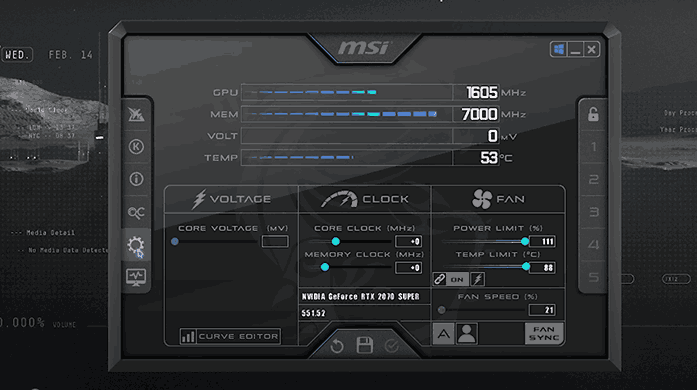
Pushing limits. It’s a gamer’s creed. But there’s always a price.
Overclocking isn’t a hobby—it’s an art. Tweaking the CPU, GPU, pushing them just a tad further than what’s stamped on the box. The results? Extra frames, better performance, the edge in a heated match. But every MHz above the norm demands its tribute in watts.
Consider the numbers. Overclocking a CPU by just 10% can spike its power consumption by 20%. A GPU? Even more punishing. Push it, and it might draw up to 30% more power than its stock settings.
Every gain has a cost. In the realm of overclocking, that cost is measured in battery life.
5. Other Contributing Factors
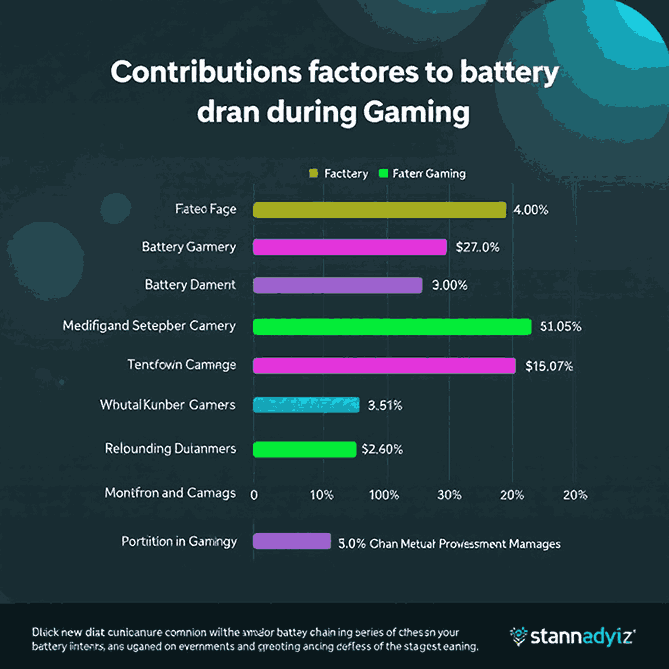
Not all foes are seen. Some sap strength from the shadows.
5.1. External Peripherals
Every gamer has their arsenal. The glowing RGB keyboard, the high-DPI mouse, the headset with that thumping bass. While these enhance the gaming ambiance and precision, they have their toll. That keyboard? It can consume up to 2 watts. A flashy mouse? Another watt. And these numbers, though small individually, add up in a marathon session.
5.2. Background Processes
Your laptop is a bustling city, not a quiet hamlet. Behind the scenes, updates roll in, downloads queue up, apps chatter. You’re focused on the game, but the system’s busy, always. Even the stealthiest of these processes, when combined, can devour up to 10% of your battery’s capacity in a few hours. Silence doesn’t mean inactivity.
5.3. System Thermals
Heat is a game’s exhaust. And it’s a predator to components. To combat this, fans whirl, cooling systems buzz. The hotter the internals, the harder these fans work. A laptop’s cooling fan, on a calm day, might sip 1 watt. Under the duress of an intense session? Expect 3 to 4 watts. It’s a vital task, yet, one that doesn’t come free.
The subtle drains, often ignored, are just as lethal. They nibble, piece by piece, until the power is no more.
6. Design Limitations
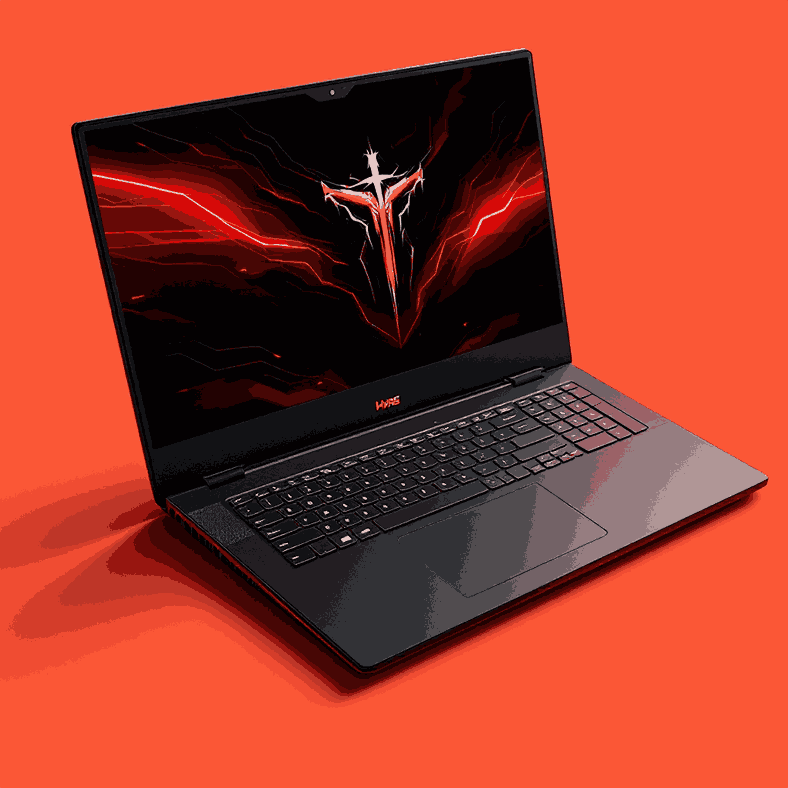
Every masterpiece has its boundaries. Gaming laptops are no exception.
6.1. Balance Between Portability and Performance
Thin is in. Sleek laptops, razor edges, lightweight designs – they’re the rage. And for a good reason. They’re travel-friendly, fit snugly in a backpack, and look downright futuristic. But, there’s the rub. Slimmer bodies mean less room for a hefty battery. So, while your laptop might weigh less, it often runs out of steam faster too. It’s a constant dance – beauty vs. endurance.
6.2. Technology Constraints
Battery tech, for all its advances, still has its shackles. Lithium-ion, the heart of most batteries, can store only so much. While processors, GPUs, and displays have leaped bounds in innovation, battery tech inches forward. Today’s best cells might last 10% longer than those from five years ago, but the games and software have become 50% more demanding. It’s a race, and the batteries, often, lag behind.
7. How to Extend Battery Life While Gaming
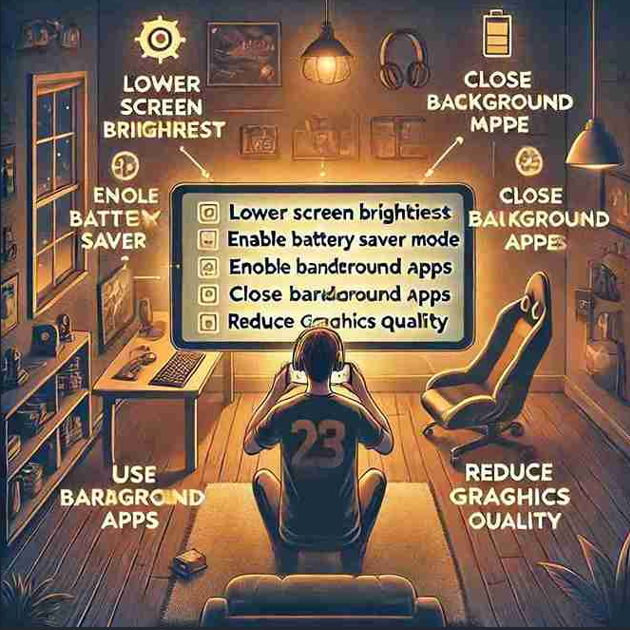
Can we turn the tide? Perhaps. A bit.
The obvious? Dim that screen. The not-so-obvious? Dive into settings, turn down those graphic extravagances. Power-hungry peripherals? Use them wisely. And don’t forget the basics: keep your software updated, manage background processes, and occasionally, give your laptop a break. Overheating is a silent battery assassin. Lastly, consider investing in an external battery pack for those longer gaming sprees.
While the battle against battery drain continues, with wisdom, we can at least delay the inevitable.
7.1. Optimize Settings
Every game boasts a realm of settings, a paradise for tweaking. But each tweak has a cost. The first step? Lower those graphics settings. Drop shadows, reduce textures. Yes, the sheen lessens, but your battery breathes longer. And that screen? It doesn’t always need to glow like the sun. A dimmer display is a friend to your battery. Make that friendship last.
7.2. Use Power-Saving Modes
Modern laptops come armed. They bear features, modes to sip power, not gulp. When gaming unplugged, switch to these power-saving havens. Your frames per second might dip, but the longevity you gain? Often worth the trade.
7.3. Regular Maintenance
Maintaining a fortress demands effort. Your gaming laptop? No different. Keep it primed. Updated drivers mean optimized performance. The software, when latest, knows the tricks to save juice. And don’t forget the physical realm. Dust, debris—they’re enemies to efficiency. A clean laptop is a frugal laptop. One that stretches each watt to the fullest.
In the vast landscape of gaming, where power is the most coveted ally, extending battery life becomes not just a task, but a vital strategy.
Conclusion
The gaming world is relentless. It demands the best, pushes boundaries, and leaves no room for compromise.
Gaming laptops, in their quest for perfection, pack power and precision. But with great power comes great consumption. From the ravenous appetites of high-end components to the aesthetic allure of sleek designs, these machines are built for performance, often at the cost of longevity. And while we’ve learned tricks and tactics to extend our playtime, there’s always a battle against the ticking battery clock.
